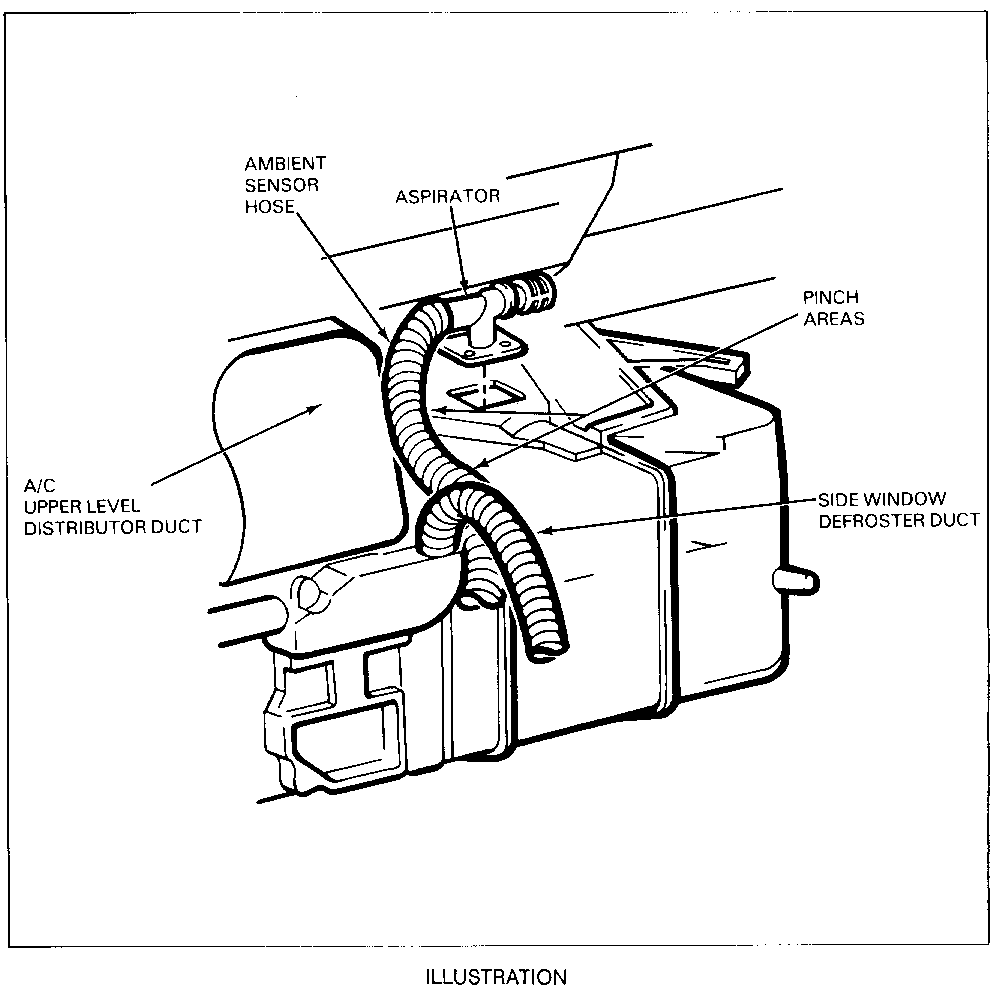IN-CAR SENSOR HOSE CAUSING LACK OF TEMPERATURE CONTROL

VEHICLES AFFECTED: 1989 AND 1990 OLDSMOBILE C/H CARS
A pinched or disconnected in-cac sensor hose has been found to be a possible cause of lack of temperature control and/or temperature overshoot on the subject vehicles. (Refer to illustration).
To check for this condition, run the A/C Blower Fan on high while holding a light weight piece of paper over the sensor opening. (Sensor opening is six retangular holes in the cluster trim plate.) If the sensor hose is not pinched or disconcected, the paper will be drawn toward the opening when held just slightly above it. Also, the paper will lightly stick to the opening if the system is drawing air through the opening properly. If no air flow is noted at the sensor opening, proceed with the following.
CORRECTION
The pinch point in the sensor hose has most often been between the upper level distributor duct and the A/C - Defroster mode door opening. With the glove compartment lowered, this pinch area can be seen. Access to relieve the pinch can be gained either through the glove compartment opening or the in-board right upper level duct opening. If the sensor hose is not pinched in this area and air flow through the sensor opening is not present, remove the I/P trim plate and A/C control head to expose the entire length of the sensor hose. Check the connection of the sensor hose at both the in-car sensor and the aspirator. If the had shaped in-car sensor adapter under the cluster trim place is mispositioned, it also can cause the lack of air flow.
IMPORTANT
Assure the aspirator hose does not become disconnected when reinstalling the A/C control head.
In all cases, after a repair has been made, assure proper air flow to the sensor has been restored.

General Motors bulletins are intended for use by professional technicians, not a "do-it-yourselfer". They are written to inform those technicians of conditions that may occur on some vehicles, or to provide information that could assist in the proper service of a vehicle. Properly trained technicians have the equipment, tools, safety instructions and know-how to do a job properly and safely. If a condition is described, do not assume that the bulletin applies to your vehicle, or that your vehicle will have that condition. See a General Motors dealer servicing your brand of General Motors vehicle for information on whether your vehicle may benefit from the information.
